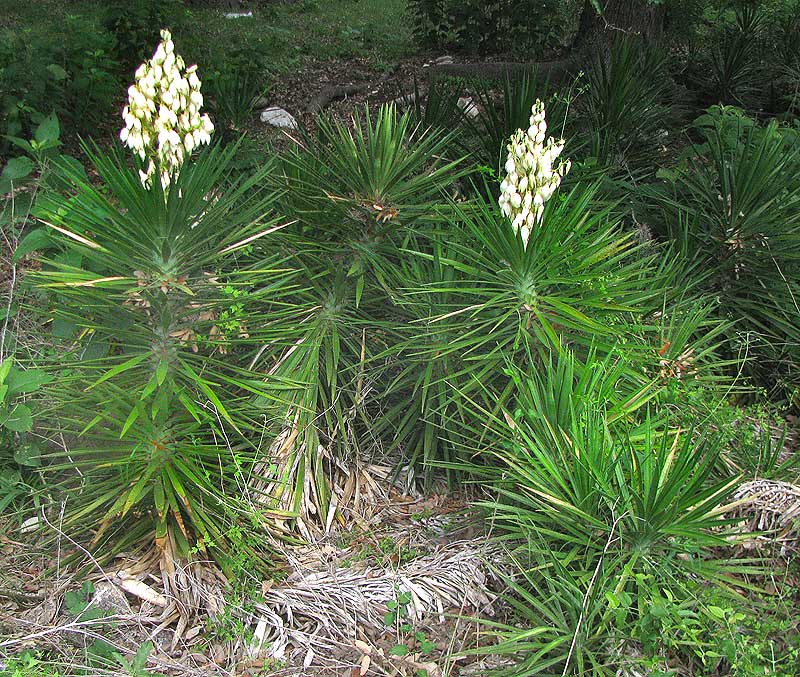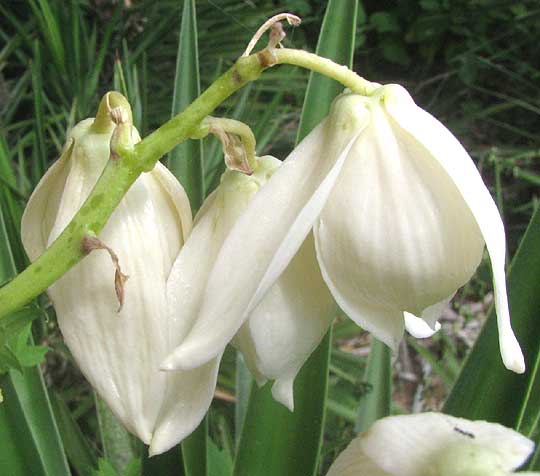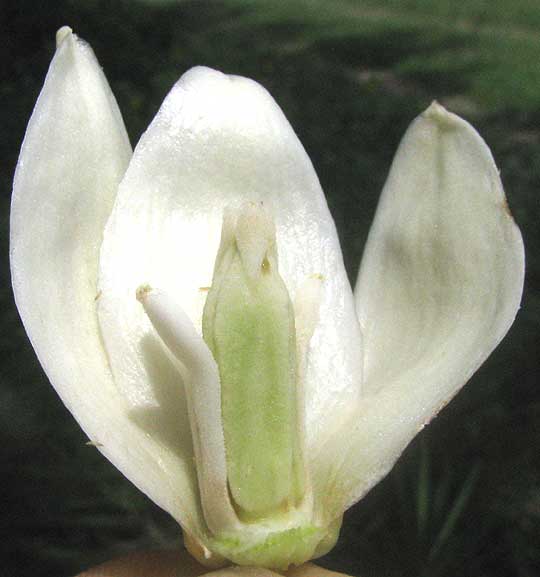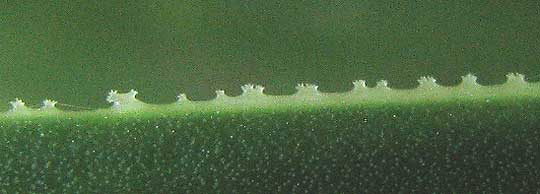Excerpts from Jim Conrad's
Naturalist Newsletter

from the June 30, 2013 Newsletter issued from the Frio Canyon Nature Education Center in the valley of the Dry Frio River in northern Uvalde County, southwestern Texas, on the southern border of the Edwards Plateau; elevation ~1750m (~5750 ft); N29.62°, W99.86°; USA
SPANISH BAYONET
Spanish Bayonet, YUCCA ALOIFOLIA, is a native yucca of Central America, Mexico and the US Deep South's coastal areas, from Virginia to Texas. Here we're too far inland for it to be native to our area but, like folks in warmer areas worldwide, people here grow it next to their houses because it's such a pretty, attention-getting plant. For example, you might remember a Spanish Bayonet we found in Pisté, Yucatán not long ago, shown at http://www.backyardnature.net/n/12/120318yu.jpg.
Here on the gravelly floodplain of the little Dry Frio River there's a clump of Spanish Bayonet looking a little different from what's shown in that picture, shown at the top of this page.
In that picture notice how the flowering yucca at the left arises from an arm-thick stem cloaked with dead blades and lying on the ground. All the flowering stems in the population arise from such reclining stems and none of their flowers rise much more than head high. That's so different from the soaring, tree-like Spanish Bayonets we've seen in Mexico that at first I thought they might be something different. Therefore, I took pictures of field marks so that later I could "do the botany."
A portrait of three nodding flowers appears

The yucca species most likely to be confused with Spanish Bayonet is the very closely related Spanish Dagger, Yucca gloriosa. However, Spanish Dagger flowers produce ovaries that are somewhat fused with their white, petal-like "tepals," while Spanish Bayonet ovaries usually rise on a short pedestal, or "stipe." A flower from one of our Dry Frio plants was broken open so could see whether the ovary stood upon a short stipe or not. You can see for yourself below:

The slightly greenish, elongate ovary in the blossom's center is indeed elevated upon a short stipe, so that's one confirmation that we have Spanish Bayonet, not Spanish Dagger.
Also, blade edges of Spanish Bayonet are very finely toothed and can cut your skin if you brush against them, while blade edges of Spanish Dagger are smooth. It was easy enough to feel closely spaced, very tiny, raspy teeth along our plants' blades' edges, so there was another confirmation that we had Spanish Bayonet, not Spanish Dagger. Moreover, once I looked closely it was clear that the teeth on Spanish Bayonet's leaf edges aren't at all like the usual broad-based spines or saw-teeth on most other scratchy-edged leaf margins. You can see a close-up of our plant's teeth below:

So, what accounts for our Spanish Bayonets displaying such a different growth form from the ones seen in Mexico?
Spanish Bayonets start life growing upright, but when they get to a certain height tend to fall over. At that point the growing tip curves upward, forming such plants as our pictures show.
Once a stem produces flowers it dies back. However, normally buds occur along the stem, so when the tip dies, the bud closest to the trunk's tip begins issuing leaves and becoming the new "top of the plant." Later it will also flower, and also die back, yielding to the next bud along the ever-lengthening stem.